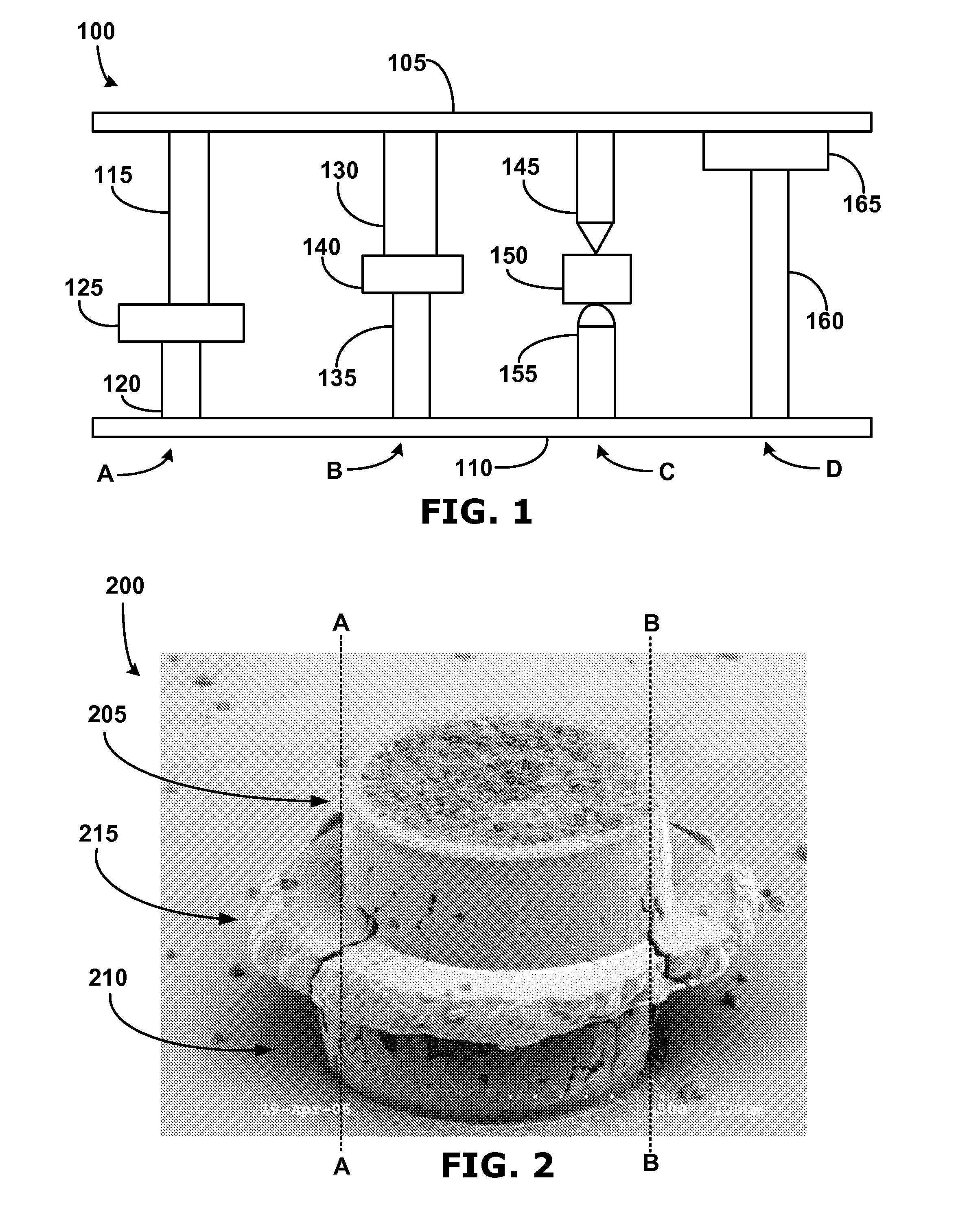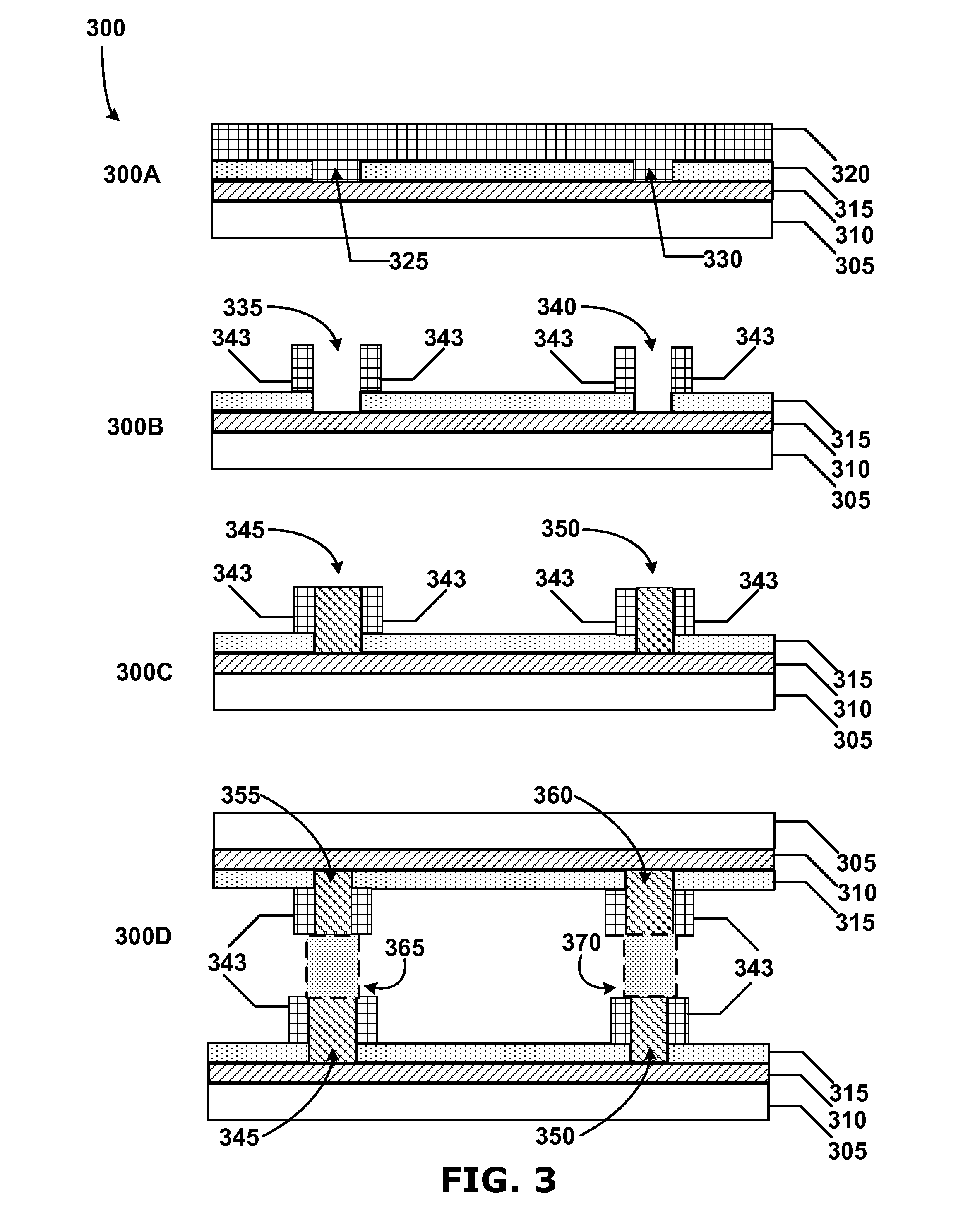Integrated circuit interconnection devices and methods
a technology of interconnection device and integrated circuit, which is applied in the direction of semiconductor device, semiconductor/solid-state device details, electrical apparatus, etc., can solve the problems of low electro-migration resistance, poor mechanical properties of copper-tin intermetallics, and low electrical properties, and achieve high aspect ratio, high profile features, and high stability.
- Summary
- Abstract
- Description
- Claims
- Application Information
AI Technical Summary
Benefits of technology
Problems solved by technology
Method used
Image
Examples
Embodiment Construction
[0023]Referring now to the figures, wherein like reference numerals represent like parts throughout the several views, exemplary embodiments of the present invention will be described in detail. Throughout this description, various components may be identified having specific values or parameters, however, these items are provided as exemplary embodiments. Indeed, the exemplary embodiments do not limit the various aspects and concepts of the present invention as many comparable parameters, sizes, ranges, and / or values may be implemented.
[0024]Various embodiments of the present invention provide interconnection structures and associated fabrication methods for use in IC packages. Metal pillars can be fabricated using electroplating deposition techniques and the metal pillars can be electrolessly joined at ambient temperature. Embodiments of the present invention include an electroless copper plating and annealing process to fabricate all-copper chip-to-substrate connections. Thus emb...
PUM
 Login to View More
Login to View More Abstract
Description
Claims
Application Information
 Login to View More
Login to View More - R&D
- Intellectual Property
- Life Sciences
- Materials
- Tech Scout
- Unparalleled Data Quality
- Higher Quality Content
- 60% Fewer Hallucinations
Browse by: Latest US Patents, China's latest patents, Technical Efficacy Thesaurus, Application Domain, Technology Topic, Popular Technical Reports.
© 2025 PatSnap. All rights reserved.Legal|Privacy policy|Modern Slavery Act Transparency Statement|Sitemap|About US| Contact US: help@patsnap.com



